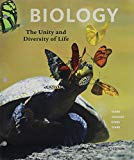
Concept explainers
Most commonly, individuals of a population show a _______ distribution within their habitat.
- a. clumped
- b. random
- c. nearly uniform
- d. none of the above
Concept introduction: A population is a group of interbreed organisms of same species that lives in same area. Population distribution is an arrangement of population in a particular area according to its conditions and requirements of the society. It also describes the location of individuals relative to one another. There are three types of population distribution, namely clumped, nearly uniform, and random.
Answer to Problem 1SQ
Correct answer: Most commonly, individuals of a population show a clumped distribution within their habitat. Hence, the correct answer is option a.
Explanation of Solution
Reason for the correct statement:
Distribution is a whole number of people or inhabitants in a specified region. Clumped distribution is an uneven distribution of population in the environment. Social interactions between the individuals can also cause the distribution to be clumped.
Option c. is given as “clumped”. In this distribution, the distance between the individuals is minimized. Therefore, the organisms do not move and the offspring are close to their parents. Hence, it shows the clumped dispersion. This limited dispersal ability increases the likelihood of a clumped distribution. Hence, option c. is the correct answer.
Reasons for the incorrect statements:
Option b. is given as “random”. Populations are randomly distributed only if the resources are uniformly available. Random distribution occurs from the nature of relationships between the individuals. Hence, option b. is incorrect.
Option c. given as “nearly uniform”. Nearly uniform distribution occurs only if there is a competition for limited resources with the individuals. Hence, option c. is incorrect.
Option d. given as “none of the above”. Most of the individuals show the clumped distribution within their habitat. Hence, option d. is incorrect.
Hence, options b., c., and d. are incorrect.
Clumped distribution of population occurs within the same habitat. The uneven distribution of resources causes the population to clump together.
Want to see more full solutions like this?
Chapter 44 Solutions
Bundle: Biology: The Unity and Diversity of Life, 14th + LMS Integrated for MindTap Biology, 1 term (6 months) Printed Access Card
Additional Science Textbook Solutions
Anatomy & Physiology (6th Edition)
Brock Biology of Microorganisms (15th Edition)
Microbiology: Principles and Explorations
Biology Illinois Edition (Glencoe Science)
- The physical surroundings in which a species is normally found is its A. Community B. Habitat C. Home range D. Nichearrow_forwardWhich of the following scenarios does NOT describe a population with a clumped distribution? A. group defense against predators B. even distribution of resources throughout the population’s habitat C. competition for mates D. seasonal migrations to follow food sourcesarrow_forwardAll members of a cohort are the same_____ . a. sex b. size c. age d. weightarrow_forward
- A population is composed of individuals of ____. a single species interacting with nonliving things b. the same species c. all species found in a given area d. interacting species and nonliving things e. interacting species of different kindsarrow_forwardThe sentence "Symbionts of M. annularis and M. faveolata exhibit different associations with irradiance due to symbiont polymorphism", is an example of _______. a. Research question b. Hypothesis c. Statistical testarrow_forwardA biologist determines the growth rate of a population of 198 frogs in a marsh near Beaverhill Lake, Alberta, to evaluate the quality of the environment. The researcher finds that, in one year, 34 were born, 86 died, 12 migrated into the marsh, and there was no emigration. a. frogs are considered an indicator species for the quality of the environment. Determine whether the growth rate of this population in one year is a cause for concern. if so, what might the concerns be?arrow_forward
- 1. Thorns are known as modified leaves, while spines are modified stems A. TRUE B. FALSE 2. We can say that it is a population when the organisms are found in common geographic region would be of the same species? A. TRUE B. FALSEarrow_forwardIn a forest, fireweed only grows in clearings formed by a tree falling over. If fireweed grows densely and uniformly in each clearing how would you describe the overall distribution of fireweed in a forest with many such clearings and forest empty of fireweed between them? Group of answer choices a. exponential b. logistic c. clumped d. overdispersed e. randomarrow_forwardIf you were to graph the height of a number of individuals following a normal distribution, where on the graph would most individuals appear? a in the middle b on the bottom c at the lowest end d toward an extremearrow_forward
- A species' ______ is all the habitats in which it can live, and all of the resources it is capable of exploiting. A. realized niche B. fundamental nichearrow_forwardBelow is a table that shows the changes in a population of domesticated rabbits. What is the most likely explanation for why size of the rabbit population remained relatively constant from 1990-1992? Year 1986 1987 1988 1989 1990 1991 1992 Population 601 732 769 800 816 815 816 O a. The population suffered from a new disease O b. A new predator was introduced c. The rabbit's prey source was killed off due to hunting o d. The population reached its carrying capacityarrow_forwardBy a currently favored hypothesis, species richness of a community is greatest when physical disturbances are of_____ intensity and frequency. a. low c. high b. intermediate d. variablearrow_forward
